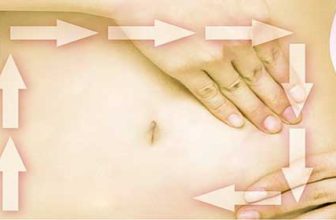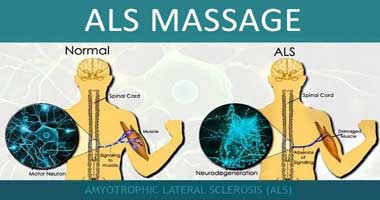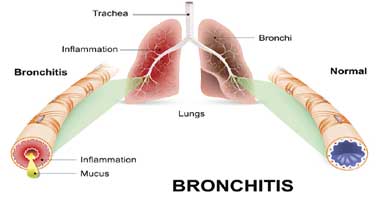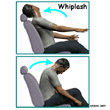 Kyphosis, also called roundback or Hunchback, is a condition of over-curvature of the thoracic vertebrae. It can be either the result of degenerative bone diseases, developmental problems, osteoporosis with compression fractures of the vertebrae, or trauma
Kyphosis, also called roundback or Hunchback, is a condition of over-curvature of the thoracic vertebrae. It can be either the result of degenerative bone diseases, developmental problems, osteoporosis with compression fractures of the vertebrae, or trauma
Treatment Goals for (Kyphosis) Hunchback Massage:
- Increase local circulation to remove metabolites in weak and taut / tight structures
- Stretch shortened muscles
- Relieve pain and muscle tension
- Restore ROM and muscle imbalances
- Retain normal alignment
- Reduce hypertonicity and trigger points
(Kyphosis) HunchBack Massage Therapy Treatment:
Hunchback Massage Therapy Treatment: Supine:
- Rolled towel placed vertically under the spine
- Hot hydro to one pectoralis major before Myofascial Release, then move on to the opposite side
- V-drape and then Petrissage around the sternum ( costal attachments)
- Petrissage, Muscle Stripping, Origin and Insertion, Ischemic Compressions (for Trigger points) to intercostals,costal border, pectoralis, subscapularis
- PNF stretching to upper thorax muscles and subscapularis release
- General treatment to the neck and adbdomen
- Rib springing and diaphragmatic release
- Massage Techniques used: Circulatory Swedish, Myofascial release, swedish techniques, GTO release, Muscle stripping, Ischemic compressions and Neuromuscular Therapy to Scalenes, Sternocleidomastoids and Suboccipitals
- Treat TMJ if necessary ( see TMJ massage)
(Kyphosis) Hunchback Massage Therapy Treatment: Prone:
- Towel rolls under anterior shoulders
- General massage techniques to latissimus dorsi, serratus posterior superior, subscapularis, and rotator cuff muscles
- Ischemic compressions to rhomboids, latissimus dorsi, serratus posterior superior, subscapularis
- Stimulating massage techniques to mid back: trapezius, rhomboids and erector spinae
- Joint play to hypomobile ribs, vertebrae and shoulder joints
Contraindications for (Kyphosis) Hunchback Massage Therapy Treatment:
- Avoid mobilizing hypermobile joints, vertebral segments
- Avoid lengthening massage techniques to weak overstretched tissue
- Do not randomly stretch fascia
- NO vigorous joint play and rib springing to people with Osteoporosis
- Do not apply heat to stretched muscles
Signs and Symptoms of ( Kyphosis ) Hunchback:
- Increased thoracic curve
- Head forward
- Protraction of the scapula
- Pain especially in the thoracic spine area, pain in the neck and shoulders
- Weak and lengthened muscles: rhomboids, middle trapezius, erector spinae
- Hypertonic and shortened muscles: upper trapezius, suboccipitals, levator scapulae, sternocleidomastoid
- Weak and lengthened: supra/ infrahyoids, longus capitis/cervicis
- Hypertonic and shortened: pectoralis muscles, subclavius, serrratus anterior, scalene
- Sunken chest
- Shallow breathing
- Decrease ROM in the: cervical spine, thoracic spine, and ribs
Self Care for Kyphosis ( Hunchback):
- Avoid poor posture and take breaks to stretch
- Avoid sleeping in a curled position
- Diaphragmatic breathing
- Self massage and stretch to shoulder protractors
- – Strengthen rhomboids, mid trapezius



